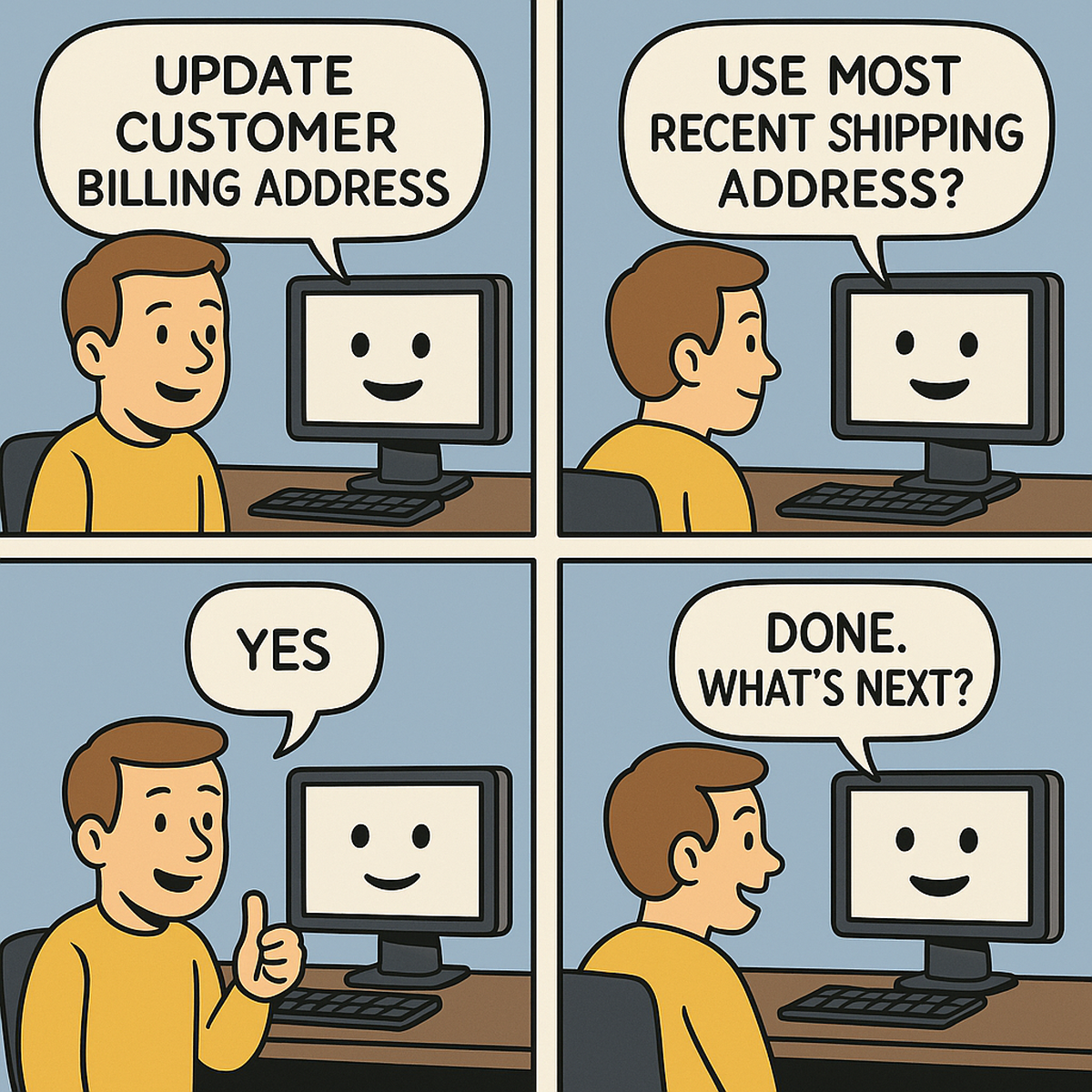Intro:
Capturing user intent is only the first step.
The real power of an agent-driven system is in how it acts - taking that intent and delivering clean, trusted outcomes without bogging the user down in process minutiae.
Designing these flows isn’t about stitching together APIs.
It’s about building journeys that maintain clarity, minimize friction, and keep user trust intact at every step.

1. Outcome-First Thinking: What Matters Most
Old systems focused on tasks and screens.
Agents must focus on final outcomes.
Example:
User: "Update billing address for Acme Corp."
- Bad flow: Show address form, validate manually, require save.
- Good flow: Agent suggests detected new address, confirms with user, updates automatically with success feedback.
Shift the mindset:
You’re not managing screens - you’re managing promises.
2. Maintaining Momentum: No Dead Ends
The biggest flow killer? Dead ends.
Moments where the system stops and says, “I don’t know what to do.”
Good agent flows never stall without a recovery path:
- Clarify missing information gently
- Offer intelligent defaults
- Suggest alternative next steps if blocked
Example:
If a user says: "Schedule a demo" but no calendar available "Would you like me to email our team to schedule manually instead?"
Outcome delivery always matters more than perfect process.
3. Progressive Clarification: Asking Without Breaking Flow
The system should assume intent first, clarify second - but never over-question at the start.
Techniques:
- Use assumed defaults where possible.
- Batch clarifications if multiple gaps exist.
- Frame clarifications as progress, not corrections.
Example:
"Scheduling onboarding for Marketing. Confirm start date: next Monday?"
Feels fast, confident, and helpful - not bureaucratic.
4. Handling Uncertainty and Risk
Outcome-first agents must acknowledge when confidence is low - without breaking trust.
Techniques:
- Confidence thresholds (only auto-complete above X%)
- Explanations ("Based on recent activity, this seems correct. Confirm?")
- Escalation paths ("Would you like me to flag this for human review?")
Agents shouldn't bluff.
They should be honest co-pilots.
5. Invisible System Orchestration
Behind every great agent flow are invisible technical moves:
- Data enrichment
- Validation checks
- Compliance gates
- Retry logic if downstream systems fail
The user should see one seamless experience - even if the system is juggling 5 microservices and 3 databases behind the scenes.
6. Real-World Case Example
User Intent: "Create onboarding for new Marketing hire."
Outcome-First Flow:
- Pulls candidate record
- Suggests standard start date
- Auto-selects Marketing track
- Assigns buddy based on team structure
- Pre-fills hardware order based on role
- Presents a single screen: "Here's the onboarding package - approve?"
Outcome-focused.
Zero need for the user to "build" the workflow manually.
Closing
Building agent experiences isn’t about making chatbots.
It’s about designing trustable systems that think in outcomes, not tasks.
The best agent flows feel:
- Effortless
- Intelligent
- Resilient
They don't just answer questions - they deliver results with minimal ceremony.
What's Next
Now that we understand how to design outcome-first flows, the next critical step is building user trust.
In the next post, we'll dive into how transparency, explainability, and confidence modeling turn good agents into trusted partners.
Because if users don't trust the system, no amount of clever flow design can save it.
Stay tuned.